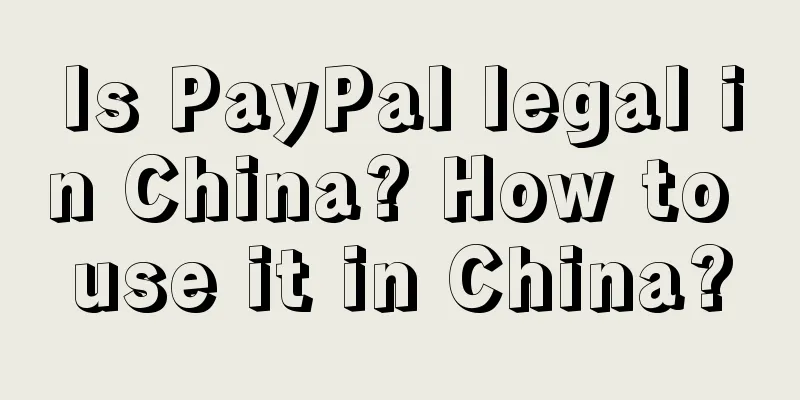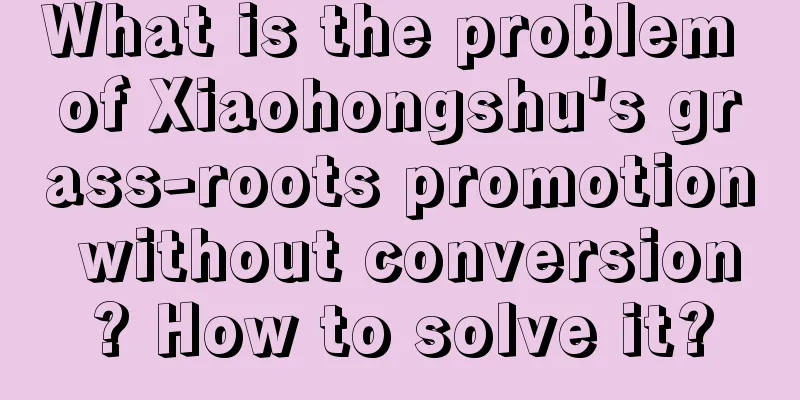Young people who save money have their wallets taken advantage of by discount stores

During the Chinese New Year, in addition to shopping malls and supermarkets, discount stores near the community became Amy's frequent visits. In Amy's words, "Comparing prices with nearby supermarkets and distances with hypermarkets, discount stores are my only choice for shopping at any time." From Amy's words, we can hear that the advantages of discount stores lie in their more favorable prices and proximity to living areas, which is why discount stores have successfully attracted everyone's patronage as soon as they went online. After crossing the "threshold" to enter the store, we are now inside the store, and the large-scale distribution of food first attracts our attention. Among these foods, near-expiry foods, beverages, imported snacks, puffed foods, etc. are the main commodities, and the prices of a bag of snacks we pick up seem to be cheaper than the prices in the supermarket in our impression. What's more, there are all kinds of novel packaging, never-before-seen foods and affordable prices, which constantly stimulate our desire to explore. At the same time, in the corner, although the daily chemical products mainly composed of women's products, personal care cleaning products, and facial masks are not distributed in a large area, they are all consumables and are also priced preferentially, which always triggers the extension of everyone's shopping needs. The secret to attracting customers from discount stores is "high quality and low price", which fully caters to the current social needs. In the post-epidemic era, social consumption power is slowly recovering, and streamlining expenses and focusing on cost-effectiveness have become the current consumption characteristics of people. At the same time, the comprehensive development of e-commerce formats has also made the growth momentum of social consumer goods retail more inclined to online, while physical retailers have been affected by the diversion of new channels, and the inventory level remains high. Offline retail has entered the inventory era, and the emergence of discount stores has helped to ease inventory pressure. Physical retail is in decline, and discount stores are trying to break through the offline growth bottleneck and buck the trend. However, domestic discount stores are in the early stages of development and lack leading companies. When it comes to offline retail, are discount stores the dark horse or just a flash in the pan? 1. Weak supermarkets and aggressive discount storesSince the reform and opening up, we have gone from the "three-foot counter" in the ticket era to open shelves and self-service retail department stores, from the years of material scarcity to a dazzling array of merchandise. In the development of my country's retail industry, supermarkets have always played a vital role. The development of China's supermarkets is a real revolution in China's circulation sector. But now, with the rapid development of mobile Internet and e-commerce platforms, shopping methods have shifted from offline to online. At the same time, fresh food e-commerce, community group buying, and instant retail have extended their reach to offline, shortening the time it takes for consumers to buy things. Consumers can buy the same products as in supermarkets in the most convenient way, and even at a more favorable price. The emergence of various new retail formats is constantly eroding the remaining traffic of offline supermarkets. Coupled with the recurrence of the epidemic and the many uncertainties facing offline operations, today's supermarkets are showing signs of fatigue. The 2022Q3 financial reports of listed supermarket companies also show that losses are still the main dilemma for each company. According to the latest third-quarter reports of listed supermarkets sorted out by the Retail Research Center of Lianshang.com, among the 13 listed supermarket companies, 6 saw a year-on-year decline in revenue, and 7 suffered losses. Take Yonghui Supermarket as an example. In the first three quarters of last year, Yonghui Supermarket's net profit attributable to its parent company had reached 887 million yuan. At the same time, closing inefficient stores has also become a means of self-rescue for supermarkets. In the first half of last year alone, Yonghui closed 17 stores, Zhongbai Group closed 58 stores, Hongqi Chain closed 79 stores, and Lianhua Supermarket closed 146 stores; in the first three quarters of last year, Jiajiayue closed 37 stores and Beijing Jingkelong closed 34 stores. There are always two sides to a coin. The development of e-commerce has affected offline retail to a certain extent, but the uncertainty of the epidemic has also made it difficult for e-commerce platforms to ship goods. When buying some consumer goods, consumers always have to go back to offline. In recent years, the breakthrough of discount supermarkets in offline retail and the current "decline" of supermarkets are in sharp contrast. While supermarkets are experiencing a wave of store closures, discount stores are constantly opening and expanding. In the 24 shopping malls with an area of more than 50,000 square meters in the key monitoring areas of Winshang Big Data, HotMaxx has opened more than 150 new stores and Hi-Go has opened more than 70 new stores since 2021, both of which focus on discounted snacks. At the same time, capital is also pouring into the track. In the first half of last year alone, there were 8 financings in the supermarket/convenience store track, of which 4 were discount supermarkets, namely lotgoo, Aotele, HitGoo, and Xiaoxiang Life. The community hard discount supermarket chain "Discount Cow" also completed a US$10 million A+ round of financing, led by XVC, followed by Sequoia China Seed Fund and Zhen Fund. In addition, many new players are also moving towards new tracks. According to Qichacha data, as of now, there are more than 28,000 discount-related companies, and more than 3,000 discount companies were registered last year alone. The breakthrough of discount stores has also allowed supermarkets to see a new antidote to offline retail, attracting many supermarkets and shopping malls to try their hand. In October 2021, Hema opened its first Hema Fresh Outlet in Shanghai, focusing on discounted fresh and frozen products. Currently, this store has expanded to Nanjing, Beijing, Guangzhou, Shenzhen and other places; Jiajiayue entered the market in the same month as Hema and opened its first discount store in Weifang, Shandong. In addition to selling regular goods, it also promoted its own private brands. The overall price of products is 10%-15% lower than the retail price of standard supermarket stores; in January last year, Suning.com followed closely and opened its first discount supermarket in Maanshan, Anhui, and plans to open 100 stores in 2022; Wumart Supermarket also opened an 80-square-meter "Meitao" discount store. According to Vipshop's prospectus, the size of China's discount retail market was only RMB 56.5 billion in 2010. Eleven years later, the market size of discount retail has increased nearly 30 times. According to iMedia data, in 2021, the market size of my country's discount retail industry will reach RMB 1.62 trillion. 2. What are discount stores?Discount stores, as an "imported product", first originated in the United States in the 1940s and 1950s, and were derived from the original department store format. After decades of development, there are already many mature brands, such as ALDI in Germany, Dollar Tree in the United States, and Don Quijote in Japan. The birth and development of these discount store giants always have similar backgrounds. For example, the German discount store brand ALDI was born after World War II during the Great Depression; the Japanese expiring giant "Don Quijote" was born after the bursting of Japan's bubble economy; and Dollar Tree grew against the trend during the US economic crisis. The increasingly tightening economic environment has also led to a change in the public's consumption concepts. Consumers have tightened their wallets and consumer demand has changed, which naturally gave rise to the development of discount store formats. Discount retail can be divided into soft discounts and hard discounts. Soft discounts are achieved by selling tail goods at ultra-low prices, which are called the "sewer" for expired or out-of-season goods. Hard discounts are achieved by streamlining SKUs and operating costs, and providing extreme prices through efficient operations and private brands. In the early days, domestic discount supermarkets mainly offered soft discounts and sold mainly near-expiry foods. However, the shelf life of goods was limited, and in order to ensure a high turnover rate, they could only open stores in areas with high traffic, so the cost pressure was also considerable. As more and more players enter the near-expiry discount market in China, there are not so many near-expiry sources in the market. Supply has become the biggest problem for near-expiry discounts. As a result, players in near-expiry discounts are constantly engaged in a "war for tail goods". At the same time, the storage environment of some commodities is relatively strict. If they are not stored properly, they are easy to deteriorate. The instability of product quality has also cast a shadow on the industry, and many discount stores have fallen into difficulties. Having learned from past lessons, discount stores now set up shop around communities, selling goods mainly for daily household consumption, including snacks, beverages, grains, oils, rice, noodles, condiments, etc. There are not many SKUs, and the area of a single store is between 100 and 300 square meters. Examples include Ai Zhekou, Zhekou Niu, and the German supermarket Buyid, which entered Shanghai in 2016. Despite only doing business in the community, these discount supermarkets have achieved remarkable results. Take AiZheJie for example, some of its stores have extremely high sales per square meter, with annual sales of tens of millions of yuan per store. And almost every one of the 70 stores opened by ZheJieNiu is profitable. Judging from the above-mentioned operating characteristics of discount supermarkets, discount supermarkets are now gradually shifting to hard discounts. In addition to streamlined operations, many discount merchants have begun to increase their profit margins by launching their own brands. For example, Discount Cow has developed its own brand products such as rice and beer, and its own brand products account for about 10% of sales. HitGoo, a typical soft discount brand, is also shedding the "expiring" label, reducing the proportion of expired food in the store, and launching its own products. It is reported that HitGoo's own products now account for 20%-30%, and the gross profit margin is about 42%. It seems that discounters have found a profitable and steadily growing business path. But in fact, compared with the gradually mature "new" retail formats, discount stores have only just begun their development, and facing China's complex and changing consumption trends, it is not so easy to create a discount giant. 3. What you think is “affordable” is secretly emptying your walletWhen you step into a discount store, you have already entered the "trap". When you see that the big brands that you usually see, such as Coca-Cola and Yuanqi Forest, are being sold at 1.9 yuan per can or 2.9 yuan per bottle, you have already reached the "danger zone". When you shift your gaze and discover that the packaging is trendy and has a bit of "foreign" color and the price is much lower than you expected, you start to pick up the shopping cart. At this moment, you have been deceived by the smoke bombs of the discount store and fell into the trap set in advance. In the atmosphere of discount stores, it is easy for us to be overwhelmed by the desire to buy, but if you stop and compare prices carefully, you will soon find that many of the items you buy in your shopping cart are not really low-priced, and there may be a few "counterfeit goods" mixed in. The author went to a community discount supermarket offline and found that a bottle of Watsons soda water, which originally cost 5 yuan/can, only cost 3.9 yuan/can in the discount store. At first glance, the discount store is indeed cheaper, but if you search on the e-commerce platform, the price of a box is only 80 yuan, which means you can get a can of the same product for 3.4 yuan. If the offline immediacy of discount stores is unattainable by e-commerce platforms, then let’s compare them horizontally. For example, a box of 950ml Bright Fresh Pasture costs 11.9 yuan per box in discount stores, and the price in nearby chain supermarkets is nearly 15 yuan, but the discounted price of this milk in supermarkets is also 11.9 yuan, and this milk is often discounted in supermarkets. At the same time, the author once bought the product at a cheaper price of 9.5 yuan in e-commerce community group buying. For the products from the above channels, the purchase date is no more than 3 days away from the production date. In addition, supermarkets and chain supermarkets often have promotions such as “buy one get one free” and “buy two get one free” for a certain product, and the combined price is more affordable than discount stores. In addition to the "sugar-coated bullet" of price, the "trap" also contains the "smoke bomb" of product packaging. Discounters that have transformed into hard discounters tend to launch their own brands to seek higher profits, but how can an unknown new brand be selected among a large number of big brands? The "cleverness" of the merchants can be seen in the packaging. For example, Hi-Tech Shopping, whose parent company Beijing Youpin Kumai Technology Co., Ltd. registered trademarks related to food and daily chemicals such as "Mutouqiqi" and "Qiang Xiaolu". "Qiang Xiaolu" imitates the Internet celebrity brand "Wang Xiaolu". Both of them focus on tiger skin chicken feet, and the packaging design is very similar. Even the display positions in the store are very close to guide consumers to buy. Some discount merchants display products that appear to be imported from abroad, but are actually "counterfeit" products, without the inspection stickers of foreign products on the back. For discounters, it is difficult to increase the price difference when facing well-known big brands, and the profit margin is limited. However, when facing Internet celebrity brands or some unknown small brands, the price difference can be much larger, and they may even be more expensive than online, and the profit from selling them is also higher. But in fact, can it really work for discounters to go the route of operating their own brands? First of all, in the food category, with material abundance, people are more particular about "eating", and consumers still prefer big brands in food selection, as the quality is more guaranteed. For discounters, new self-operated brands will not be able to gain user favor in a short period of time. However, those brands that do well in self-operated food, such as Hema and 7-11, have accumulated enough brand potential and launched unique and special products based on user characteristics. Secondly, in the category of daily chemical cleaning and care, under the dominance of century-old daily chemical brands such as Procter & Gamble and Shanghai Jahwa, niche shampoos with unknown brands are rarely chosen by consumers. For other daily necessities with categories but no brands, discounters cooperate with factories to customize affordable products with super cost-effectiveness. Domestic big brands such as Taobao Factory, Pinduoduo, and Miniso are also doing this. In 2017, German discount giant ALDI entered China and opened its first store in Shanghai. More than 90% of the products of this discount giant are its own brands. However, in the complex, changeable and highly competitive Chinese market, ALDI has only opened 27 stores in five years and has not yet left Shanghai. It is obvious that even overseas discount giants have to start looking for new operating growth models in the Chinese retail industry. In the retail field, whether it is the "traditional conservative" giant supermarkets or the "new power" community group buying, everyone is eyeing the arrival of new players. "In fact, I go to discount stores not just for the cheap prices. On that basis, I will carefully select the products with the latest dates, more reliable brands and what I really need. Moreover, consumption downgrade does not mean demand downgrade. Buying the right things instead of expensive ones is my first consumption principle." Amy said with ease. In the new consumption era, consumers have become more sensitive to prices. They hope to buy their favorite products at more favorable prices. As for whether this is a consumption "upgrade" or "downgrade", does it still matter? Author: Camille; Editor: Ray Source public account: Tidal Business Review (ID: daily-case), focusing on mass consumption, TMT and financial sectors, sharing interesting business reviews and business insights. |
>>: Consumer Creators Are Rising
Recommend
How to write a cross-border e-commerce advertising script? How to advertise?
With the development of the global economy and the...
Brand and popularity
This article objectively analyzes relevant cases o...
How long does it take to return products on Amazon in the United States? How to reduce the return rate?
After shopping on the Amazon platform, if you are ...
Douyin draws the sword, Meituan strikes back
Douyin has gradually created a bigger wave in the ...
Luckin Coffee’s “9.9” breakthrough only requires a few drops of Moutai?
Luckin's new product is really popular, with s...
Have Yili and Mengniu lost their voice in the Spring Festival marketing war?
Many brands have begun to market their products du...
Does Shopee not allow mainland China to buy? Can I buy it in China?
If you want to buy something on the Shopee platfor...
Tik Tok prohibits pretense and cracks down on fake personalities!
The Douyin platform recently issued the "Anno...
Practical sharing of video account operation
How can a video account be operated to make money?...
How to cancel Facebook account? Can others still find you after you cancel Facebook account?
Facebook is one of the most popular platforms that...
With private domain revenue exceeding 100 million yuan and a repurchase rate of nearly 40%, how does LemonBox, the No. 1 in its niche category, achieve growth through private domain?
Private domain marketing continuously follows up a...
What products are better to sell on Amazon when you first start? What are the characteristics of hot-selling products?
On the Amazon platform, merchants can choose to se...
What are the potential consumer market opportunities in 2023?
In 2023, the market economy began to develop in an...
Xiaohongshu’s global “invasion”: How do TikTok “refugees” stir up traffic?
A large number of "TikTok refugees" have...
How do I delete a product on Wish? How do I restore a product that was deleted by mistake?
With the rapid development of e-commerce, Wish, as...









